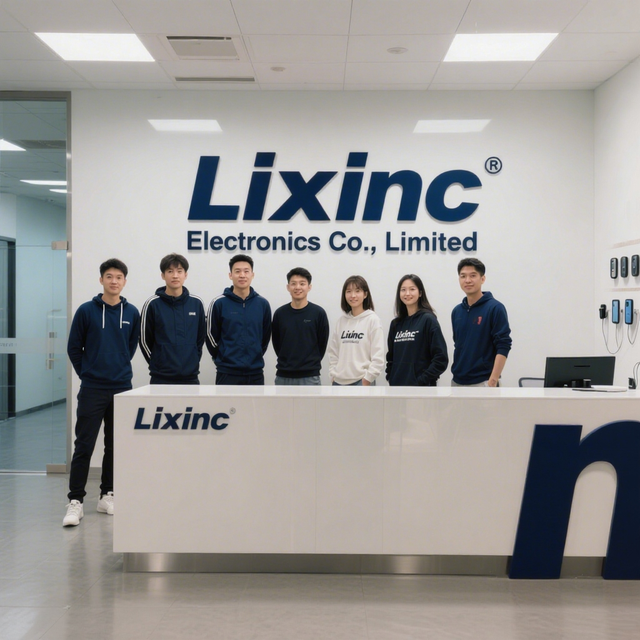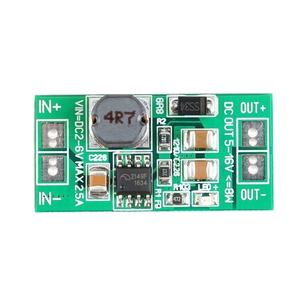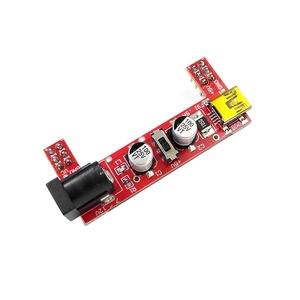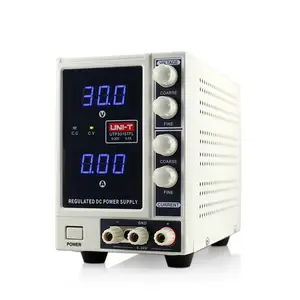Arduino Uno Dc Power Supply































About arduino uno dc power supply
Where to Find Arduino Uno DC Power Supply Suppliers?
China serves as the central hub for electronics component manufacturing, with Shenzhen-based suppliers dominating the production of power solutions for development boards like the Arduino Uno. The region's vertically integrated supply chains—spanning semiconductor sourcing, PCB fabrication, and final assembly—enable rapid prototyping and scalable production. Key advantages include access to standardized DC-DC converter modules (e.g., LM2596, MP1584), compliance-ready AC/DC adapters, and modular breadboard-compatible power supplies.
Suppliers in this ecosystem benefit from proximity to Tier-1 component distributors and logistics gateways, reducing material lead times by 20–30%. Most offer plug variants (US/EU/UK/AU) and voltage configurations (9V, 12V) tailored to international markets. With average MOQs starting at 1–10 pieces, buyers can source small batches for testing or scale to high-volume orders with minimal setup delays. Lead times typically range from 7–15 days for ready-to-ship units, supported by established export channels across North America, Europe, and Southeast Asia.
How to Choose Arduino Uno DC Power Supply Suppliers?
Evaluate potential partners using these critical criteria:
Technical Specifications & Compatibility
Confirm output voltage stability (regulated 9V or 12V DC), current capacity (≥1A recommended), and connector type (2.1mm center-positive barrel jack). Verify compatibility with Arduino Uno’s reverse polarity protection and onboard voltage regulator. For adjustable models, ensure low ripple noise (<100mV) to prevent microcontroller resets.
Production and Quality Assurance
Prioritize suppliers demonstrating consistent on-time delivery (>94%) and robust quality systems. While formal ISO 9001 certification is not universally listed, operational metrics such as 100% on-time fulfillment and response times under 3 hours indicate reliable service levels. Look for evidence of functional testing per batch and adherence to RoHS standards for lead-free construction.
Customization and Scalability
Assess capability for:
- Voltage/output customization (fixed or adjustable)
- OEM labeling, packaging, or color variation
- Integration with development kits or educational bundles
Cross-reference product listings with company specialization—firms focusing on "Development Boards, Kits" or "Power Adapters" tend to offer better technical alignment than general component vendors.
Transaction Security and Support
Favor suppliers with transparent pricing, documented reorder rates, and responsive communication. A reorder rate below 15% may suggest niche focus or limited demand, whereas higher rates (26%+) could indicate competitive pricing but potential quality trade-offs. Use secure payment terms and request samples before committing to bulk orders.
What Are the Best Arduino Uno DC Power Supply Suppliers?
| Company Name | Main Products (Listings) | Online Revenue | On-Time Delivery | Avg. Response | Reorder Rate | Min. Order Quantity | Price Range (USD) |
|---|---|---|---|---|---|---|---|
| Shenzhen Kabbol Technology Co., Ltd. | Chargers & Adapters (3540) | US $100,000+ | 100% | ≤3h | <15% | 1–10 pcs | $4.00–$8.85 |
| Shenzhen Bluetech Technology Co., Ltd. | Customization options available | US $60,000+ | 100% | ≤8h | <15% | 10 pcs | $0.47–$4.00 |
| Shenzhen Tuozhanteng Electronic Components Co., Ltd. | Other ICs (1498) | US $110,000+ | 94% | ≤8h | 15% | 1–20 pcs | $0.30–$5.98 |
| Lixinc Electronics Co., Limited | Other ICs (1545) | US $60,000+ | 86% | ≤1h | 26% | 10 pcs | $0.31–$10.06 |
| Shenzhen Chuangheying Electronic Technology Co., Ltd. | Other ICs (23081) | US $1,300,000+ | 100% | ≤6h | <15% | 1–5 pcs | $2.00–$319.00 |
Performance Analysis
Shenzhen Kabbol and Chuangheying stand out for reliability, both achieving 100% on-time delivery and strong revenue performance. Kabbol specializes in finished power adapters with global plug compatibility, making it ideal for end-user applications. Chuangheying offers a broader portfolio, including programmable lab-grade supplies, though its higher-end products cater beyond basic Arduino needs. Bluetech and Tuozhanteng provide cost-effective module-level solutions under $1, suitable for integration into custom electronics projects. Lixinc Electronics leads in responsiveness (≤1h) but has a lower on-time delivery rate (86%), indicating possible logistical inconsistencies despite active order volume. Buyers seeking high-volume, compliant adapters should prioritize Kabbol; those needing compact DC-DC modules may prefer Tuozhanteng or Lixinc for price efficiency.
FAQs
What voltage and current specifications are required for an Arduino Uno power supply?
The Arduino Uno operates optimally with a 9V DC input at 1A or higher. While it accepts 7–12V via the barrel jack, 9V ensures stable regulation without excessive heat dissipation. Avoid unregulated or poorly filtered sources that may cause brownout resets.
Can I use a generic DC power supply with my Arduino Uno?
Yes, provided the adapter delivers regulated DC output with correct polarity (center-positive, 2.1mm plug). Always verify no-load voltage with a multimeter to prevent overvoltage damage. CE/FCC-compliant units reduce electromagnetic interference risks during sensitive sensor operations.
What is the typical lead time for sample orders?
Sample shipments generally dispatch within 3–7 business days. With express freight, international delivery takes 5–10 days. Some suppliers offer 1-piece MOQs, allowing evaluation of form, fit, and function prior to larger procurement.
Do suppliers support OEM/ODM customization?
Selected vendors, such as Shenzhen Bluetech, explicitly list customization capabilities including logo printing, cable length adjustments, and packaging revisions. Minimum volumes for branding typically start at 1,000 units, though smaller modifications may be negotiable.
How do I verify product compliance and safety?
Request documentation for RoHS, CE, or FCC declarations where applicable. For consumer-facing products, insist on fuses, overcurrent protection, and insulated housings. Independent electrical testing using load banks and oscilloscopes is recommended for mission-critical deployments.














































































































